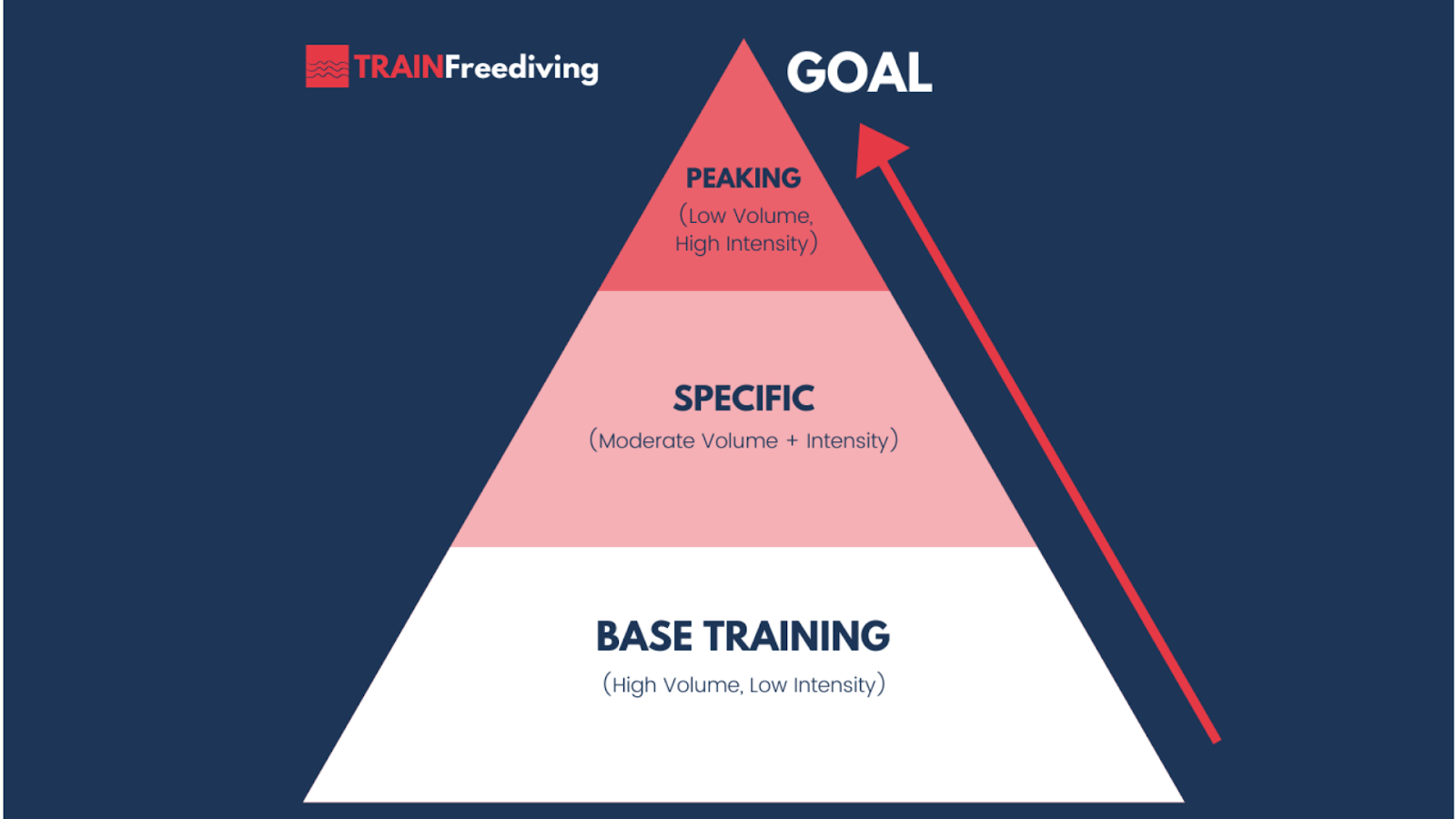Unlock Your Neurological Capacity To Perform At Your Best With Peaking Training For Freediving

Peaking-Training is the third of three training phases, which make up the training cycle. Peaking plays an important role in making sure your maximum performances can be performed as reliably and as easily as possible.
Just landed here? Read this first: How To Prevent Freediving Plateaus And Set New Personal Bests Using Training Cycles)
The purpose of peaking is to ‘unlock’ your neurological capacity to perform maximum dives. This happens by teaching your nervous system that;
1. You are not in any danger when performing a maximum
2. It can allow your body and mind to spend their resources on a single dive
These two things are essential for performing at your best at the end of your training cycle. They will contribute to decreased risk of making mistakes during max performances, lowering your urge to breathe, and reducing the risk of BO, LMC, or barotrauma.
Your nervous system is designed to protect you from harm. Before peaking, it will perceive maximum performances as potentially harmful, and it will employ certain strategies to prevent you from reaching these “harmful performances”. These strategies include;
-Loss of focus (pre-dive stress, wandering mind)
-Feelings of panic or extreme discomfort (urge to -breath and contractions)
-Triggering ‘safety’ responses (early BO or inability to equalize)
As you might imagine, these neurological protective mechanisms can reduce the quality of your dives, so any diver who wants to perform at their best in the safest, easiest, and most reliable way possible is going to want to perform a peaking phase.
Unfortunately, a major myth in freediving prevents many divers from reaping the benefits of the peaking response. Many divers believe that the more repetitions of their PB, the better they will be able to handle new PBs. For the same reasons, this is untrue during phase two. Attempting to ‘peak’ for too long, by constantly repeating PBs over and over is only going to lead to overtraining. Maximum and near-maximum dives, in any discipline, are extremely fatiguing and hard to recover from.
After just a handful of dives (5-10) above 80% of your PB, you will be peaked. Sustain this for more dives, and you will just overtrain and deteriorate your sport-specific fitness, actually decreasing your capacity to handle maximum performances, increasing your risk of the problems we’re trying to solve by peaking. An ‘extended’ peaking phase is worse than not peaking at all.
How is peaking structured?
Remember the pyramid analogy from the training cycle article? Peaking training represents the top of the pyramid. This means you will have the lowest diversity and volume of training, howe. However, it will all be done very close to your personal best, within 80%.
This kind of structure aims to tune the nervous system to maximums, and how better to do this than to expose it to nothing but near-maximum performances.
During peaking, all other types of training should stop. That means that all general-fitness workouts, skills-training, breath-hold tables, ETC… Need to stop. They serve no purpose during peaking and can only make you tired.

What to include in your peaking phase for freediving.
-Near-maximum target performances
-Very little of any other kind of training or physical exercise
A correctly structured peaking phase, which focuses only on building up near-maximum performances with enough recovery, is all you need to make the required neural adaptations.
After this phase, assuming it was done correctly, you should expect to feel confident setting new personal bests and feel like achieving your goal was easy.
Want to learn more about how to train most efficiently and effectively to progress as a freediver? Watch our on-demand workshop: Uncover 7 Secrets To Unlocking Your Potential And Setting New Personal Bests.